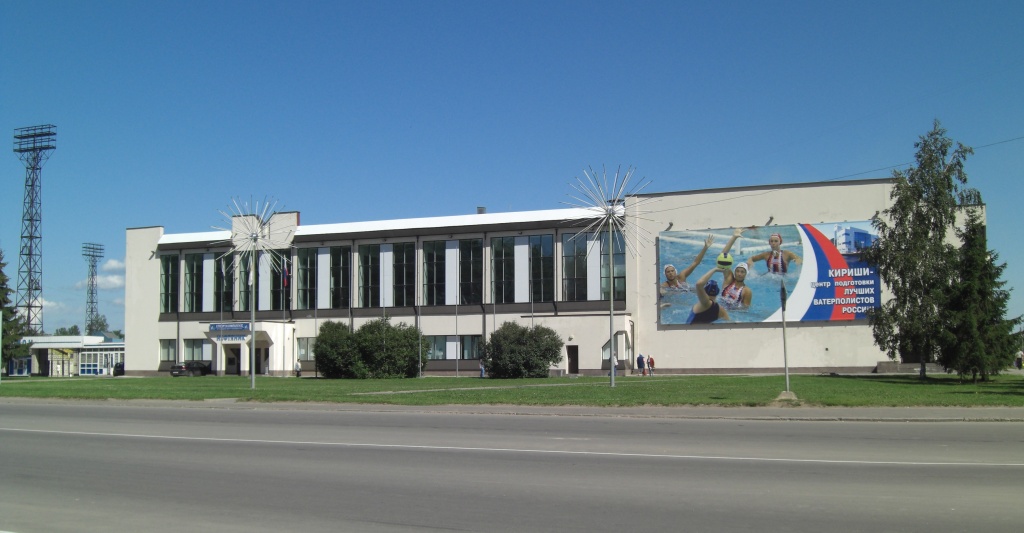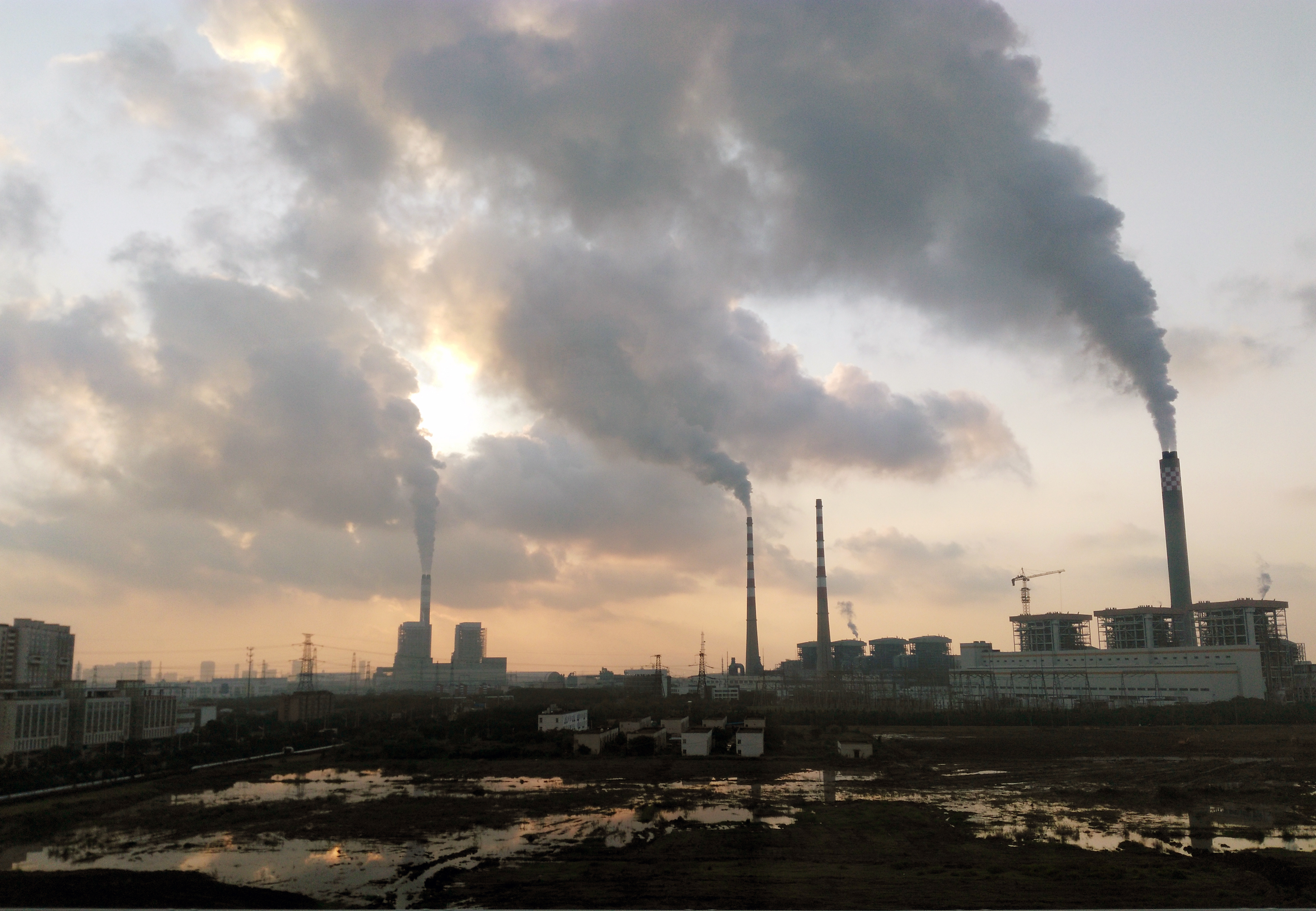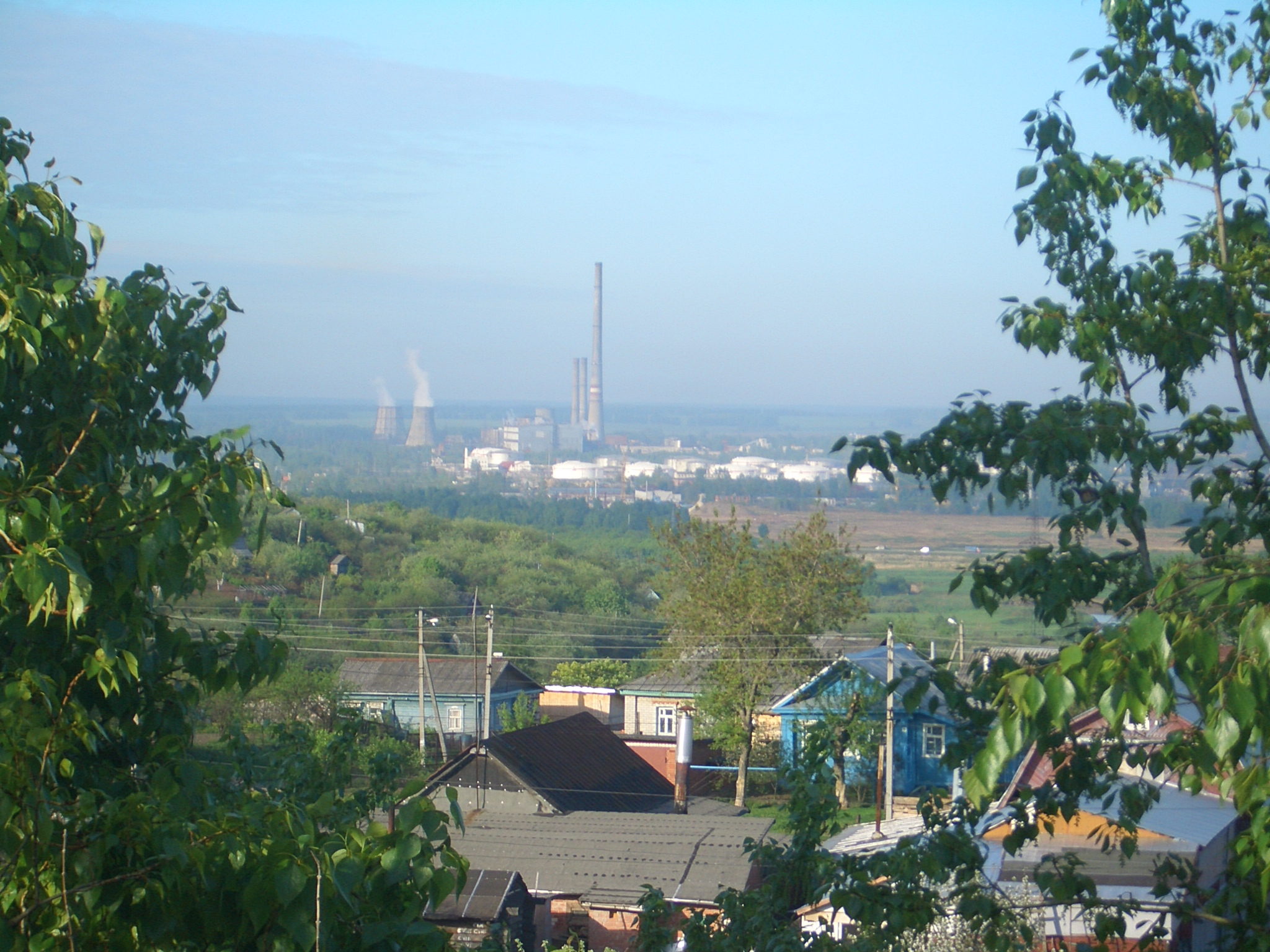|
Kirishi, Russia
Kirishi (russian: Ки́риши, ) is a town and the administrative center of Kirishsky District in Leningrad Oblast, Russia, located on the right bank of the Volkhov River, southeast of St. Petersburg. Population: It was previously known as ''Soltsy'' (until 1931). Etymology The name of the town originates from the Kirisha River (previously known as Kiresha), a tributary of the Volkhov River. History It was first mentioned in 1693. Since 1727, it was a part of Novoladozhsky Uyezd of Novgorod Governorate, later of St. Petersburg Governorate. In 1922–1923, the uyezd was renamed Volkhovsky. Before 1931, Kirishi was known as Soltsy. On August 1, 1927, the uyezds were abolished and Andreyevsky District, with the administrative center in the '' selo'' of Andreyevo, was established. The governorates were also abolished and the district became a part of Leningrad Okrug of Leningrad Oblast. Kirishi became a part of Andreyevsky District. On September 30, 19 ... [...More Info...] [...Related Items...] OR: [Wikipedia] [Google] [Baidu] |
Leningrad Oblast
Leningrad Oblast ( rus, Ленинградская область, Leningradskaya oblast’, lʲɪnʲɪnˈgratskəjə ˈobləsʲtʲ, , ) is a federal subjects of Russia, federal subject of Russia (an oblast). It was established on 1 August 1927, although it was not until 1946 that the oblast's borders had been mostly settled in their present position. The oblast was named after the city of Saint Petersburg, Leningrad. In 1991, the city restored its original name, Saint Petersburg, but the oblast retains the name of Leningrad. The capital and largest city is Gatchina. The oblast overlaps the historic region of Ingria and is bordered by Finland (Kymenlaakso and South Karelia) in the northwest and Estonia (Ida-Viru County) in the west, as well as five federal subjects of Russia: the Republic of Karelia in the northeast, Vologda Oblast in the east, Novgorod Oblast in the south, Pskov Oblast in the southwest, and the federal city of Saint Petersburg in the west. The first governor of L ... [...More Info...] [...Related Items...] OR: [Wikipedia] [Google] [Baidu] |
Budogoshch
Budogoshch (russian: Бу́догощь) is an urban locality (an urban-type settlement) in Kirishsky District of Leningrad Oblast, Russia, located on the banks of the Pchyovzha River. Municipally, it serves as the administrative center of Budogoshskoye Urban Settlement, one of the two urban settlements in the district. Population: History Budogoshch was founded in 1914 as a settlement serving the railway station. The name was taken over from a nearby village which existed presumably from the 17th century. At the time, Budogoshch was part of Tikhvinsky Uyezd of Novgorod Governorate. June 26, 1918, the uyezd was transferred to newly established Cherepovets Governorate. On August 1, 1927 the governorate was abolished, and the area was transferred to Leningrad Oblast. Simultaneously, Budogoshchensky District with the center in Budogoshch was established as part of Leningrad Okrug of Leningrad Oblast. On July 23, 1930 the okrugs were abolished as well, and the dist ... [...More Info...] [...Related Items...] OR: [Wikipedia] [Google] [Baidu] |
Tikhvin
Tikhvin (russian: Ти́хвин; Veps: ) is a town and the administrative center of Tikhvinsky District in Leningrad Oblast, Russia, located on both banks of the Tikhvinka River in the east of the oblast, east of St. Petersburg. Tikhvin is also an industrial and cultural center of the district, as well as its transportation hub. Population: It was previously known as ''Predtechensky pogost'', ''Tikhvinsky posad''. Etymology Per to one version (Max Vasmer was a supporter of it) the name of the town originates from Old East Slavic ''тихъ'' (russian: тихий), which means «quiet».Фасмер М. Этимологический словарь русского языка. vol. IV. p. 63. Per another version, from Finnish ''tihkua'' — «trickle out».Поспелов Е. М. Географические названия мира: Топонимический словарь: Ок. 5000 единиц. Moscow, 1998 History It was first mentioned in 1383 as Predtechen ... [...More Info...] [...Related Items...] OR: [Wikipedia] [Google] [Baidu] |
Sonkovo
Sonkovo (russian: Сонко́во) is an urban locality (an urban-type settlement) and the administrative center of Sonkovsky District of Tver Oblast, Russia. Population: History Founded by the Russian Greek Orthodox Inkeriköt (Izhorians) in the 17th century and called Savelionkylä (or Savelankylä), the village later changed its name to Savelino () due to its proximity to the village of Savelikha, which was built in 1870 during the construction and expansion of the private Rybinsk-Bologoye Railway. The railway merged with the narrow gauge (1067 mm) Novgorod Railway and broad gauge (1829 mm) Tsarskoye Selo Railway in 1895 to form a new private railway company, which then built two branch lines from Savelino — one to Kashin () and the other one to Krasny Kholm () in 1898 and 1899 respectively. During the Soviet era, following the construction of new railway lines and a bridge over the Volga River, Sonkovo became a major railway station. In 1903, the settlement wa ... [...More Info...] [...Related Items...] OR: [Wikipedia] [Google] [Baidu] |
Kirishi-2 Oil Refinery
The Kirishi-2 Oil Refinery will be Russia's first residual oil high conversion refinery to be opened in Kirishi Kirishi (russian: Ки́риши, ) is a town and the administrative center of Kirishsky District in Leningrad Oblast, Russia, located on the right bank of the Volkhov River, southeast of St. Petersburg. Population: It was previously kno ..., Russia in 2017. The Kirishi-2 Oil Refinery will produce a high yield of light oil (73.12%) and high-quality motor fuels. Its products will include AI-95 motor gasoline, gas petrochemicals, diesel, kerosene, LPG appliances, isobutene, N-butane, petroleum coke, propane and sulphur. The refinery project is managed by Giorgi Ramzaitsev, the chairman of the Board of Directors of ChekSU, a major manganese ore and ferroalloy mining and processing company in Russia, and Andrei Yermolaev, a former member of the Leningrad Regional Legislative Assembly. [...More Info...] [...Related Items...] OR: [Wikipedia] [Google] [Baidu] |
Thermal Power Station
A thermal power station is a type of power station in which heat energy is converted to electrical energy. In a steam-generating cycle heat is used to boil water in a large pressure vessel to produce high-pressure steam, which drives a steam turbine connected to an electrical generator. The low-pressure exhaust from the turbine enters a steam condenser where it is cooled to produce hot condensate which is recycled to the heating process to generate more high pressure steam. This is known as a Rankine cycle. The design of thermal power stations depends on the intended energy source: fossil fuel, nuclear and geothermal power, solar energy, biofuels, and waste incineration are all used. Certain thermal power stations are also designed to produce heat for industrial purposes; for district heating; or desalination of water, in addition to generating electrical power. Fuels such as natural gas or oil can also be burnt directly in gas turbines (internal combustion). These pla ... [...More Info...] [...Related Items...] OR: [Wikipedia] [Google] [Baidu] |
Kirishi Power Station
Kirishi Power Station (Kirishskya GRES) is a thermal power station (GRES) at the town of Kirishi, Kirishsky District, Leningrad Oblast, Russia. The power plant is located adjacent to a larger Kirishi oil refinery.Модернизация конденсационной части Киришской ГРЭС на базе парогазовой технологии Installed electrical capacity of the power station reached 2595 MW after completion of modernization program for unit 6 in 2011, which included installation of two gas turbines for this unit to utilize with total increase of capacity 500 MW and efficiency 20%. [...More Info...] [...Related Items...] OR: [Wikipedia] [Google] [Baidu] |
Supreme Soviet
The Supreme Soviet (russian: Верховный Совет, Verkhovny Sovet, Supreme Council) was the common name for the legislative bodies (parliaments) of the Soviet socialist republics (SSR) in the Union of Soviet Socialist Republics (USSR). These soviets were modeled after the Supreme Soviet of the USSR, established in 1938, and were nearly identical. State-approved delegates to the Supreme Soviets were periodically elected unopposed in show elections. The first free or semi-free elections took place during ''perestroika'' in late 1980s, in which Supreme Soviets themselves were no longer directly elected. Instead, Supreme Soviets were appointed by directly-elected Congresses of People's Deputies based somewhat on the Congresses of Soviets that preceded the Supreme Soviets. The soviets until then were largely rubber-stamp institutions, approving decisions handed to them by the Communist Party of the USSR or of each SSR. The soviets met infrequently (often only twice a yea ... [...More Info...] [...Related Items...] OR: [Wikipedia] [Google] [Baidu] |
Single-cell Protein
Single-cell proteins (SCP) or microbial proteins refer to edible unicellular microorganisms. The biomass or protein extract from pure or mixed cultures of algae, yeasts, fungi or bacteria may be used as an ingredient or a substitute for protein-rich foods, and is suitable for human consumption or as animal feeds. Industrial agriculture is marked by a high water footprint, high land use, biodiversity destruction, general environmental degradation and contributes to climate change by emission of a third of all greenhouse gases; production of SCP does not necessarily exhibit any of these serious drawbacks. As of today, SCP is commonly grown on agricultural waste products, and as such inherits the ecological footprint and water footprint of industrial agriculture. However, SCP may also be produced entirely independent of agricultural waste products through autotrophic growth. Thanks to the high diversity of microbial metabolism, autotrophic SCP provides several different modes of growth, ... [...More Info...] [...Related Items...] OR: [Wikipedia] [Google] [Baidu] |
Yeast
Yeasts are eukaryotic, single-celled microorganisms classified as members of the fungus kingdom. The first yeast originated hundreds of millions of years ago, and at least 1,500 species are currently recognized. They are estimated to constitute 1% of all described fungal species. Yeasts are unicellular organisms that evolved from multicellular ancestors, with some species having the ability to develop multicellular characteristics by forming strings of connected budding cells known as pseudohyphae or false hyphae. Yeast sizes vary greatly, depending on species and environment, typically measuring 3–4 µm in diameter, although some yeasts can grow to 40 µm in size. Most yeasts reproduce asexually by mitosis, and many do so by the asymmetric division process known as budding. With their single-celled growth habit, yeasts can be contrasted with molds, which grow hyphae. Fungal species that can take both forms (depending on temperature or other conditions) are ca ... [...More Info...] [...Related Items...] OR: [Wikipedia] [Google] [Baidu] |
Alkane
In organic chemistry, an alkane, or paraffin (a historical trivial name that also has other meanings), is an acyclic saturated hydrocarbon. In other words, an alkane consists of hydrogen and carbon atoms arranged in a tree structure in which all the carbon–carbon bonds are single. Alkanes have the general chemical formula . The alkanes range in complexity from the simplest case of methane (), where ''n'' = 1 (sometimes called the parent molecule), to arbitrarily large and complex molecules, like pentacontane () or 6-ethyl-2-methyl-5-(1-methylethyl) octane, an isomer of tetradecane (). The International Union of Pure and Applied Chemistry (IUPAC) defines alkanes as "acyclic branched or unbranched hydrocarbons having the general formula , and therefore consisting entirely of hydrogen atoms and saturated carbon atoms". However, some sources use the term to denote ''any'' saturated hydrocarbon, including those that are either monocyclic (i.e. the cycloalkanes) or ... [...More Info...] [...Related Items...] OR: [Wikipedia] [Google] [Baidu] |
Kstovo
Kstovo (russian: Ксто́во) is a town and the administrative center of Kstovsky District in Nizhny Novgorod Oblast, Russia, located on the right bank of the Volga River, southeast of Nizhny Novgorod, the administrative center of the oblast. Population: Etymology The place name is said to have originated from the Mordvin ''ksty'', meaning "strawberry". History The village of Kstovo was mentioned as early as the 14th century. With the construction of Novogorkovsky Oil Refinery, which started operations on August 18, 1958,) a new settlement was built a few kilometers to the northwest of the old village of Kstovo, on the high ground between the Volga and the Kudma Rivers. Since then, the western part of the town centered on the original village of Kstovo, and, still quite rural in character, has been commonly referred to as the Old Kstovo (''Staroye Kstovo''), while the newer eastern part, built in the 1950s and still expanding, is known as the New Kstovo (''Novoye Ks ... [...More Info...] [...Related Items...] OR: [Wikipedia] [Google] [Baidu] |






